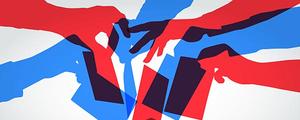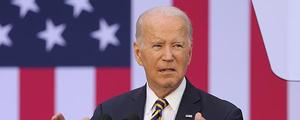Story Highlights
- 74% think Dallas, 72% Boston are safe to live in or visit
- 26% say Detroit, 27% Chicago are safe
- Partisans differ by double digits on 14 of the 16 cities
WASHINGTON, D.C. -- Of 16 large U.S. cities, Americans are most likely to consider Dallas and Boston as safe to live in or visit and are least likely to say Detroit and Chicago are safe.
In addition to the nearly three-quarters of U.S. adults who think Dallas (74%) and Boston (72%) are safe, majorities ranging from 52% to 63% rate nine other cities as safe. These include Seattle, Las Vegas, Miami, Minneapolis, Houston, New Orleans, Atlanta, San Francisco and Washington, D.C.
Along with Detroit (26%) and Chicago (27%), less than half of Americans say Philadelphia (47%), New York (41%) and Los Angeles (41%) are safe. Except for Philadelphia, which is seen as unsafe by half of U.S. adults, these other five cities receive majority-level unsafe ratings.
Partisanship Is Key Differentiator in Perceptions of U.S. Cities’ Safety
U.S. adults’ partisanship greatly affects their views of the safety of most of the cities included in the July 3-27 Gallup poll. With the exception of Dallas and Miami, Democrats and Democratic-leaning independents are substantially more likely than Republicans and Republican-leaning independents to perceive each city as safe. On average, the party gap today across the 16 cities is 29 percentage points, much greater than the two-point gap in the 2006 poll.
Majorities of Democrats consider all but two of the cities -- Chicago and Detroit -- to be safe places to live in or visit. In contrast, majorities of Republicans view just five cities as safe -- Las Vegas, Miami, Dallas, Boston and Houston. Democrats are most likely to perceive Seattle and Boston as safe, while Boston and Dallas top the list among Republicans.
There are no significant differences by gender or annual household income and minimal gaps by age, urbanicity and education level, with young adults, urban residents and college graduates rating cities safer than their counterparts.
Differences in Perceptions of City Safety Compared With 2006
The latest poll marks the seventh time that Gallup has gauged Americans’ views of the safety of 14 of the 16 cities since 1990. Las Vegas and New Orleans were only included once before – in 2006, the last time all of the cities were measured. In 2006, nine of the cities were considered safe by majorities of Americans, and 11 hold that distinction today.
Several cities are now much more likely to be considered safe than in 2006 -- New Orleans, Miami, Los Angeles and Washington, D.C. At the same time, Americans are significantly less likely than they were in 2006 to say Chicago, San Francisco, Minneapolis and Seattle are safe.
New Orleans’ safe rating has doubled from the 2006 reading, taken a year after Hurricane Katrina ravaged the city. Meanwhile, Americans’ perceptions of Miami as a safe city have gradually grown from 17% in 1990 to the latest 59%, which is its first majority-level rating. Washington, up 30 points since 1990, is also viewed as safe by a majority for the first time. Los Angeles’ current 41% safe rating is its highest to date and up 15 points since 1990.

Custom graphic. Four line charts showing the percentage saying each of three cities is safe: Miami, Washington, and Los Angeles.
On the other end of the spectrum, Chicago’s current 27% safe rating is down 20 points from 2006 but was similarly low in 1990. Between 1990 and 2001, Americans’ perception of Chicago as a safe city rose to 53%, where it remained until it fell slightly in 2006.
Views of safety in San Francisco, Minneapolis and Seattle have all dropped precipitously since 2006 -- from 15 to 18 points. These three cities, along with Chicago, have seen increases in crime in recent years. In 2006, San Francisco, Minneapolis and Seattle ranked among the highest in terms of perceived safety.

Custom graphic. Four line charts showing the percentage saying each of four cities is safe: Chicago, San Francisco, Minneapolis and Seattle.
The drops in perceptions of safety between 2006 and now for these four cities are largely explained by sharp decreases in Republicans’ safe ratings, while Democrats’ ratings have been relatively stable.
Bottom Line
Americans are most inclined to view Dallas and Boston as safe cities and least likely to perceive Chicago and Detroit as safe. While Dallas and Boston have consistently enjoyed majority-level safe ratings throughout Gallup’s trends, Chicago has not since the early 2000s, and Detroit has never been considered safe by a majority.
Perceptions of city safety are heavily influenced by partisanship, which was not a factor in 2006. Views of cities’ safety also reflect recent trends in crime statistics. High-profile public situations -- such as the 2020 killing of George Floyd in Minneapolis, the creation of the autonomous zone in Seattle and a heavy focus on gun violence in Chicago -- most likely have affected views of crime in those cities.
To stay up to date with the latest Gallup News insights and updates, follow us on Twitter.
Learn more about how the Gallup Poll Social Series works.




